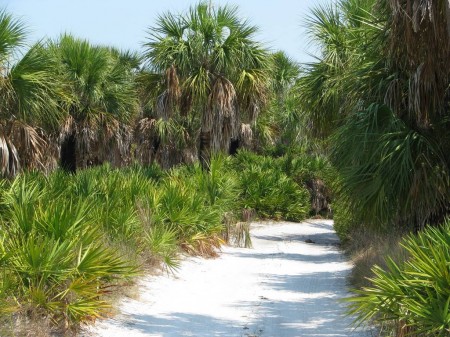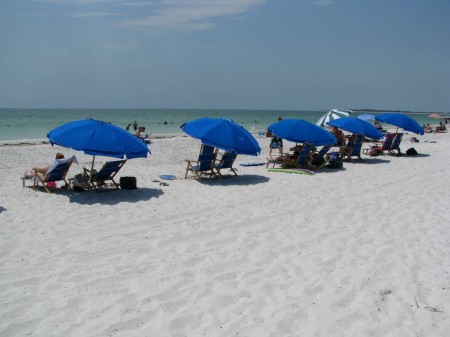
The Caladesi Ferry provides comfortable and fun transportation from Honeymoon Island State Park to Caladesi Island State Park.
Posted by David McRee at BlogTheBeach.com
The journey to Caladesi Island begins from Honeymoon Island. The shallow-draft pontoon boat transports passengers from the dock in Honeymoon Island State Park through the calm backwaters to the bay side of Caladesi, thick with mangroves, mullet, diving pelicans and graceful long-necked wading birds. The jovial bantering of the captain and first mate mixed with educational factoids about the islands make the 20 minute ride seem like mere seconds. There are no bridges to Caladesi, nor are there any paved roads on the island. Only the ranger has a vehicle on the island.
Passengers disembark the ferry at the marina, walk past the snack bar/gift shop, and then follow the trail to the boardwalk and beach. There are restrooms at the snack bar and again about halfway down the boardwalk to the beach. They’ve got you covered.

Sand trails take you on a tour of the various habitats found on Caladesi Island, like pine flatwoods and oak/palm hammock.
In addition to relaxing at the beach, visitors can go hiking on several miles of trails. If you are planning to hike the trails during the summer months, take plenty of water and sunscreen and consider scheduling your hike for earlier in the day if possible. It gets fearfully hot on those trails in the summer. Spring and fall migration is an excellent time to go birding on the trails.

Fire has always played an important role in the balance of nature in Florida. Here on Caladesi, controlled burns are an important habitat management tool.
Visitors to barrier island preserves like Caladesi Island, Honeymoon Island, and Cayo Costa State Park will often encounter burned areas. Sometimes fires are started by summer lightning strikes, but often they are the result of controlled burns. Without undergoing periodic fires, natural Florida woodlands tend to build up a lot of dead leaves and branches. Areas that go too long without being subjected to fire have so much dead plant matter built up that when fire does come, it burns so hot that it damages mature trees that would have easily withstood a lesser fire. So rangers conduct controlled burns to make sure that too much “tinder” doesn’t build up. Birds and animals also benefit from periodic fires, but I’ll leave that explanation for another day.
Caladesi Island has a very interesting history. On the trail you’ll find some historic photos posted of Henry Scharrer and his daughter Myrtle, who were early pioneers on the island. Myrtle wrote a book of her life on Caladesi Island. It is called Yesteryear I Lived in Paradise: The Story of Caladesi Island (link to Amazon). It’s a heartwarming story and a fascinating window on the past. The new printing has lots of black and white photos from the old days. I highly recommend reading it right before visiting Caladesi to add a nostalgic dimension to your experience. It is available on Amazon.com and is also for sale in the Caladesi Island gift shop for about $20.

Most visitors stay close to the boardwalk and restrooms so it's not hard to find a secluded stretch of beach on Caladesi, epecially on weekdays.

At the foot of the boardwalk a vendor rents beach umbrellas, chairs and kayaks. Lifeguards are on duty during the warm months.

You don't have to take the ferry to get to Caladesi Island. If you have your own boat, even a kayak, you can paddle to the island like these adventurers. The condos in the background are actually on Honeymoon Island. They appear much larger and closer in this photo than they actually are because of the zoom lens I'm using to take this photo.
Caladesi Island is attached to north Clearwater Beach so it is possible to walk from Clearwater Beach to Caladesi Island State Park. However, it is a walk of several miles and is not suitable for a casual stroll.
Learn more about Caladesi Island
Nature and Shelling on Caladesi Island
Learn more about the Caladesi Ferry
Learn more about Honeymoon Island State Park
Cayo Costa Island State Park offers a similar, but even more remote island experience.




